The Complete Guide to Digital Marketing for the Automotive Industry



As a marketer in the automotive industry, you aim to reach more customers, sell more cars and parts, get ahead of the competition, and ultimately grow your business.
Does that sound about right?
Cool! That doesn’t mean it’s easy, though. Marketing for the automotive industry is notoriously hard.
Visibility is becoming a challenge. It’s no longer enough for customers to know who you are.
They also need to understand what kind of services you provide and how those services can provide value to them.
Your company values should inspire the customer, while your employees should advocate for your brand to help customers find positive stories about your company online.
All the information customers stumble upon online about your company will help you create a personal relationship with them.
I know, tall order! That’s why I said marketing for the automotive industry isn’t easy.
We’ve got you covered, though! At SyncApps, we help dozens of automotive companies ace their marketing. We built this guide based on their experience.
Want more inspiration from your peers? Check out our in-depth insights for the automotive industry.
Before we dig into building an automotive digital marketing strategy, let me ask you this: are you clear on your goals?
What are you trying to achieve through digital marketing?
A study of automotive dealerships found that increasing lead and conversion volume is their biggest priority.

The automotive industry is reaping big benefits from digital marketing. This platform continues to provide the auto industry with a wider audience.
Marketers in this highly competitive sector can now reach customers regardless of their geographical location.
In an ever-changing automotive industry, lead generation is rapidly becoming a priority. Tactics for generating leads are also evolving, and to keep up with the speed, you need to buckle up and give chase. (See what we did here?)
Consumer expectations are also changing. They now need the best delivered to them in terms of automotive user experience. Fifty-nine percent of car buyers spend their time researching online.
Most consumers conduct online research before visiting a dealership. During this process, they expect a smooth and enjoyable buying experience. This expectation arises from the fact that they are about to make a significant financial and emotional investment in their purchase.
But how do you reach your target market and convert them to buy? Simple — through digital marketing. Display authentic and influential user-generated content on social walls through digital screens in stores, websites, events, social media channels, and more. This not only helps the customers and visitors make an informed decision but also helps your brand increase sales and achieve higher conversions.
Your audience is online most of the time. So it goes without saying that a well-planned and executed digital marketing campaign can help you reach the right people at every stage in the buying process.
According to Google, there are five micro-moments during an auto purchase.

Before visiting your dealership, potential car buyers are already making decisions and forming opinions based on their online and offline research. It is crucial to be present and provide valuable information during these research stages. Doing so will help ensure that your dealership is one of the options they consider before making a purchase.
The which-car-is-the-best moment is the phase before a car buyer is sure which car they want. Naturally, they will extensively consult people they trust to narrow their choices. They can consult close friends, influential blogs, popular discussion forums, product review sites, etc.
The is-it-right-for-me moments are when the buyer questions whether they need a car. They get practical and consider the right car for them, space, interior, color, trunk space, airbags, sunroof, etc. At this stage, video usage ranks high. Top video searches include features, options, reviews, test drives, and interior and exterior walkthroughs.

Image Source: Think With Google
The can-I-afford-it moments are when they decide if a car is within their price range. They go online and compare prices.
The where-should-I-buy moments are when the car buyer is deciding what dealerships to visit. They will search for “car dealerships near me” and check your website to see if you have the type of car they are looking for, your opening and closing hours, and your contact information.
The am-I-getting-a-deal moment. During this stage, a shopper tries to find out online whether they are getting a fair deal. While at the dealership, the buyer will be online, gathering information on whether they are getting a good price for the vehicle.
As an auto seller, you must meet the potential car buyers across all their shopping moments. Your brand must be online and active. You must provide useful information that a potential car buyer is looking for.
This is where digital marketing comes in handy. It enables you to generate and deliver customized messages that attract potential buyers during their purchase journey.
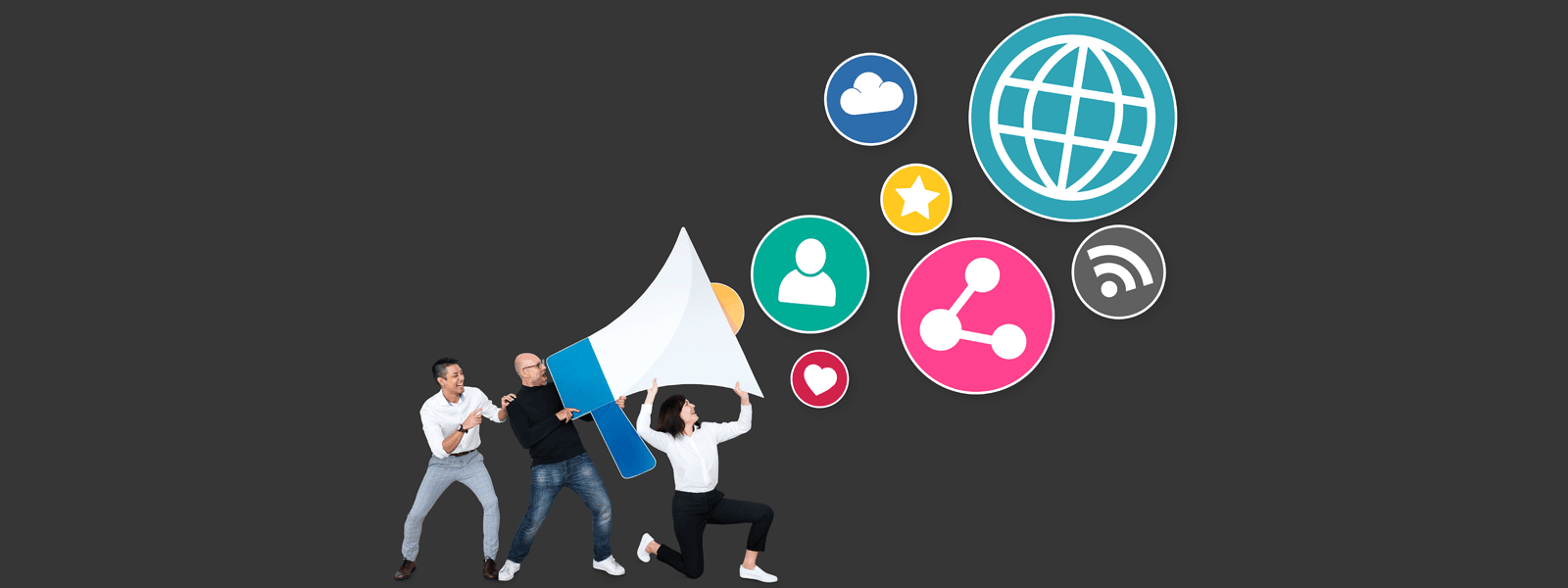
As a dealer, use micro-moments and digital marketing to grow your business. However, before entering the marketing techniques and processes, first do market research. Understand the automotive industry and what it’s offering, your customers and what they are looking for, and your competitors.
Find out if your business idea will have a ready market. Does the idea have potential? Will it be profitable at the end of the day?
Get an overview of the industry, different subsectors, typical customers, latest technology, and future trends. Hire someone to collect and review this information to decide on a niche. Estimate the kind of profit you will make, understand the marketing context, and how you can effectively run your campaigns.
Your digital marketing campaign will also show car buyers how different you are from other car dealers. It also means developing an AI system that is unique to your brand and selling points that will help boost your marketing strategy. Find out:
Information collected gives you insight into what you can improve on or do better.
Gather the same information for your dealership.
Survey past and existing customers.
This information will give you an insight into your strengths and weaknesses. You can identify threats and opportunities and use the information gathered to drive better marketing initiatives. It will tell you where you fit in the market and where your marketing efforts need to be focused.
Create buyer personas that go beyond demographic information. They should define actual people and information on their:

With this information, you can understand what will persuade them to visit your dealership to inquire and make a purchase.
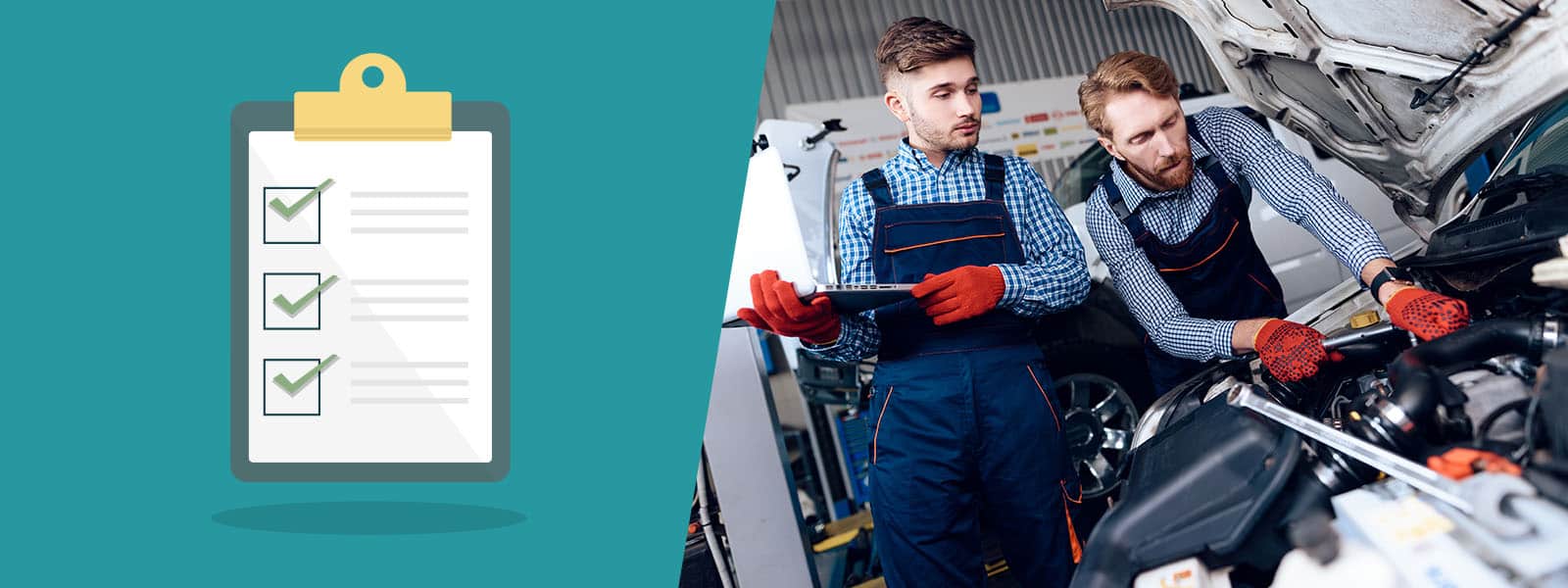
This guide will take you through a digital marketing process that puts you ahead of the competition. It starts with changing marketing processes and techniques from traditional to digital marketing. These include:
The number of internet users worldwide is 4.39 billion. Those using social media 3.48 billion. Social media is, therefore, not something you can ignore. It increases your audience, provides you with analytics, provides audience data, and drives business growth.
On average, these digital consumers spend two hours, 22 minutes every day, checking out their social networks and messaging sites. Of these, the new car shoppers use social media to research. It goes with out saying that social media should be a part of any digital marketing strategy in the automotive industry.

Social media marketing is an effective marketing tool for most marketers. When using it, consider the numerous social media networks available. Depending on your audience research, choose the ones where your audience spends time. Consider also the posting and engagement guidelines for each platform.
There are over one billion YouTube users. Research also says it’s the world’s second largest search engine after Google. It’s, therefore, an excellent platform for engaging buyers.
You can do different videos on your channel to reach different buyers. Educational and explainer videos are particularly very effective for a car-selling business.
Educational videos share handy tips on how to use products and get more from them. Explainer videos talk about your business, products, and services. They explain how you meet your customers’ needs and solve their problems, which is what consumers want to hear. For maximum views from YouTube, you can also generate attractive QR codes with video links share them on social media sites, and watch your audience grow!
It is worth noting that revenues for marketers who use video as part of their (digital) marketing efforts grow at a rate of 49 percent. Video content influences 70 percent of car buyers that use YouTube for research. If these numbers don’t get you super excited, nothing will.
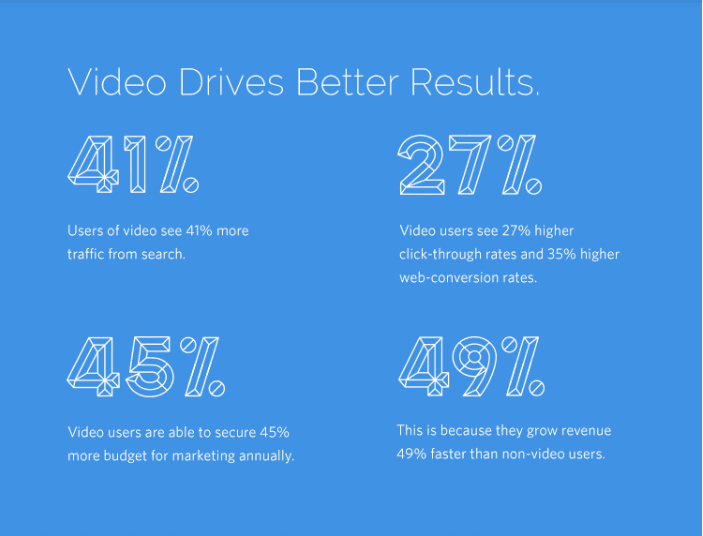
Instagram is great for visual marketing, with over one billion monthly users. Sixty percent of Instagram users open the app to seek out and discover products.
Get a business account for your page, and you will get analytics to help you track what content does best.
Facebook is the top social media platform and the most important tool for automotive marketers.
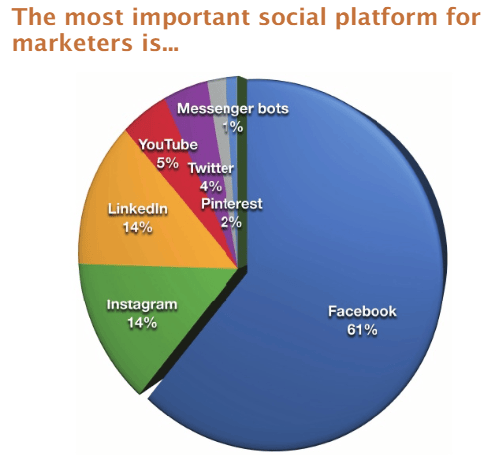
Facebook has numerous tools you can use in your digital marketing strategy. These include the Facebook business page, Messenger, your profile, live video, and groups.
Facebook allows you to share images, videos, GIFs and status updates. You can also access analytics that tells you how your posts are doing. This, in turn, helps you identify what is working and what posts need a boost.
There’s a catch, though. You need to post original and useful content. You must also constantly and consistently engage your audience (followers) by responding to their comments and messages.
Other platforms you can use include Twitter, LinkedIn, Tumblr, and so many more depending on your audience.
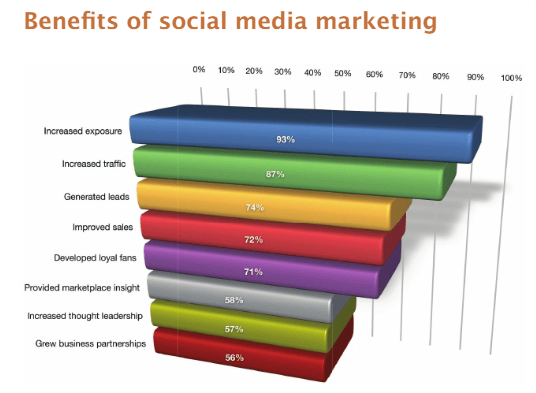
Advertising on social media platforms is also highly effective. Consider including social media advertising in your digital marketing strategy for maximum impact. This will help you to boost brand awareness, increase traffic to your site, and generate leads.
In turn, this will lead to increased engagement, more video views, app downloads, an increase in in-store visits, increased conversions, and an increase in sales.
According to Kenshoo, 56 percent of car buyers who contacted a dealer after seeing a social media advert made a purchase.
The benefits of SEO are widely known. This tactic helps your website rank better on search results when people look for keywords related to your brand. It includes off-page and on-page tactics.
On-page SEO involves taking care of your page speed, page optimization, crawl errors, meta descriptions, title tags, and keyword placements. Keyword placement will involve keyword research to determine what content your audience desires.
Off-page SEO will involve activities like guest blogging, link building, and social sharing.
To rank you better, Google wants to know that your dealership is trustworthy. They will use signals like links to your site from trusted sources, external business reviews, social media sharing, etc. Link Building affects SEO, as it sends signals to Google that the page is trustworthy which leads to an increase in page authority and improves page ranking on SERPs.
Create content that fits customer needs while targeting short and long-tail keywords. To increase SEO value of your content, make sure to add keywords naturally. Ensure you provide rich content that is engaging, interactive, useful, and well-researched. SaaS Marketing services can further enhance your content strategy by enabling you to offer tailored content solutions under your brand name, thus expanding your service offerings without increasing overhead.
SEM is SEO’s paid version. SEM allows you to buy space at the top of search pages. Considering that search is the number one resource car buyers use, you must try and have your product on that first page.
Pay Per Click is the payment you make for every click from an ad you create.
According to research, consumers are 22 times more likely to view your automotive category item and 28 times more likely to convert when clicking on an ad.
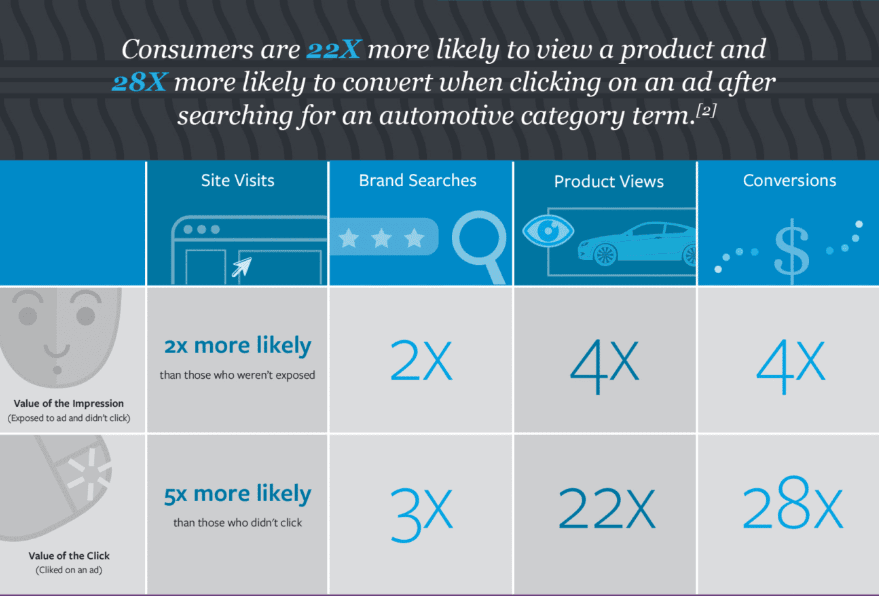
Some of the most popular PPC advertising platforms are Facebook and Google AdWords.
On Facebook, you create an ad that is the same as a status update, pick a target audience, location, and age, and set a budget of how much to spend per click. The post will blend with other posts.
On Google AdWords, you bid for keywords against other advertisers to rank first.
Content marketing involves consistently providing your target buyers with relevant and valuable content. Buyers want relevant information when they begin their search for an automotive. Your job is to ensure that your content is available from when they begin their search to when they purchase.
Ninety-five percent of vehicle buyers go digital when searching for information. Most of them start their research online rather than at a dealer. Sixty percent of all searches are conducted on a mobile device.
Vehicle buyers will use other sources like word of mouth, television ads, or even visit a dealership. Buyers particularly search for information on video-driven platforms. With video, they can experience a part of the shopping journey.
Google followed one buyer and the digital interactions during a car buying journey. Below is what they found out.
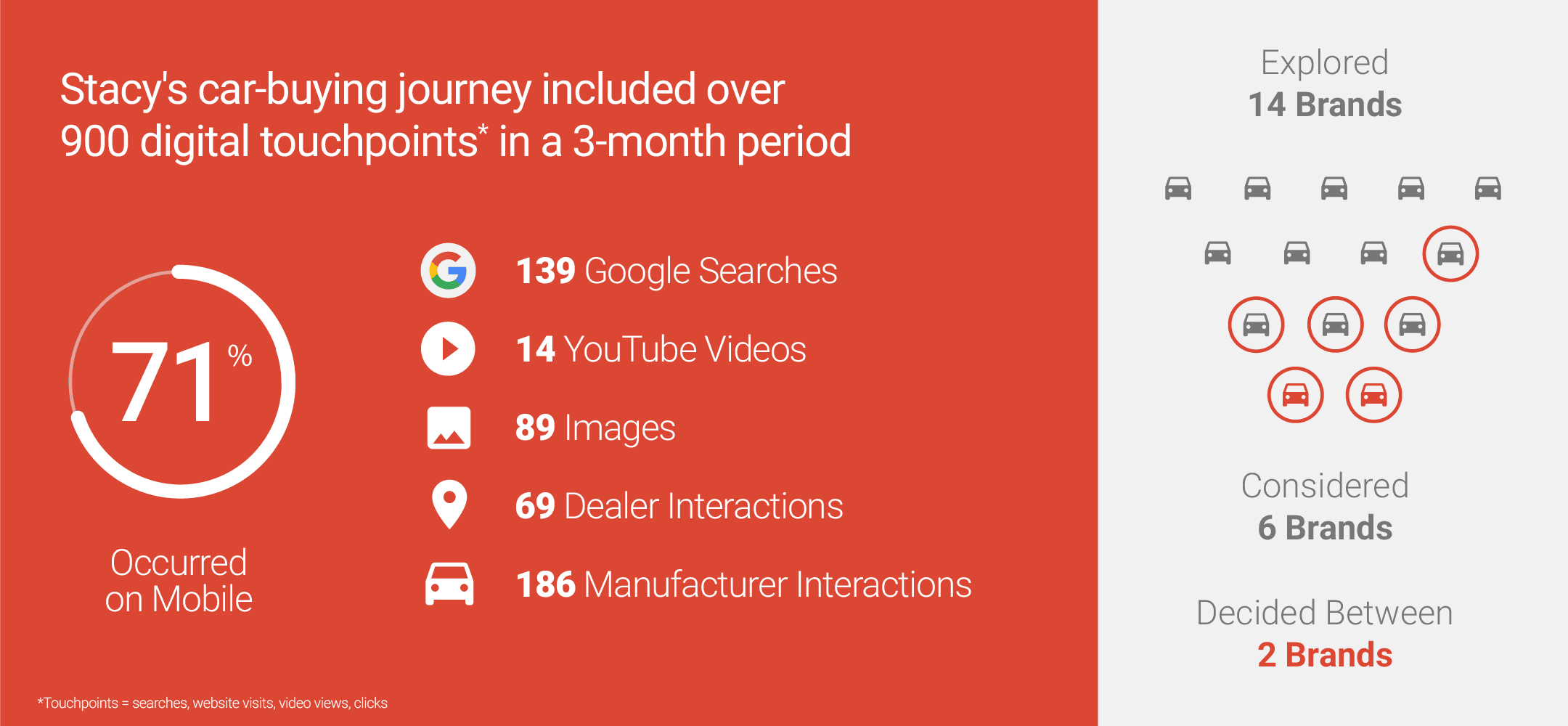
Image Source: Think With Google
All those interactions were numerous opportunities for an auto dealer to meet her with valuable and relevant information that would influence her final decision.
The information shoppers gather online drives them to your dealership. Reach and retain customers by providing adequate information online on platforms they most frequent.
In affiliate marketing, an independent party helps you sell your products, and, in turn, you give them a percentage of the sale. They search for opportunities to:
The return on investment is great with affiliate marketing if done right, especially when you partner with the best affiliate programs available in your niche.
Email marketing to directly communicate with your potential customers. It has a higher return on investment than social media. For every $1 you spend on email marketing, you get an ROI of about $32. For decades, email marketing has been among the best ways for businesses to get the word out, with easily understood success metrics and a high return on investment.
More than half the world’s population (over 4.2 billion people) were active email users globally in 2022. By the end of 2026, that figure is projected to go over 4.7 billion. 55% of consumers say email is their preferred digital channel for business communication.
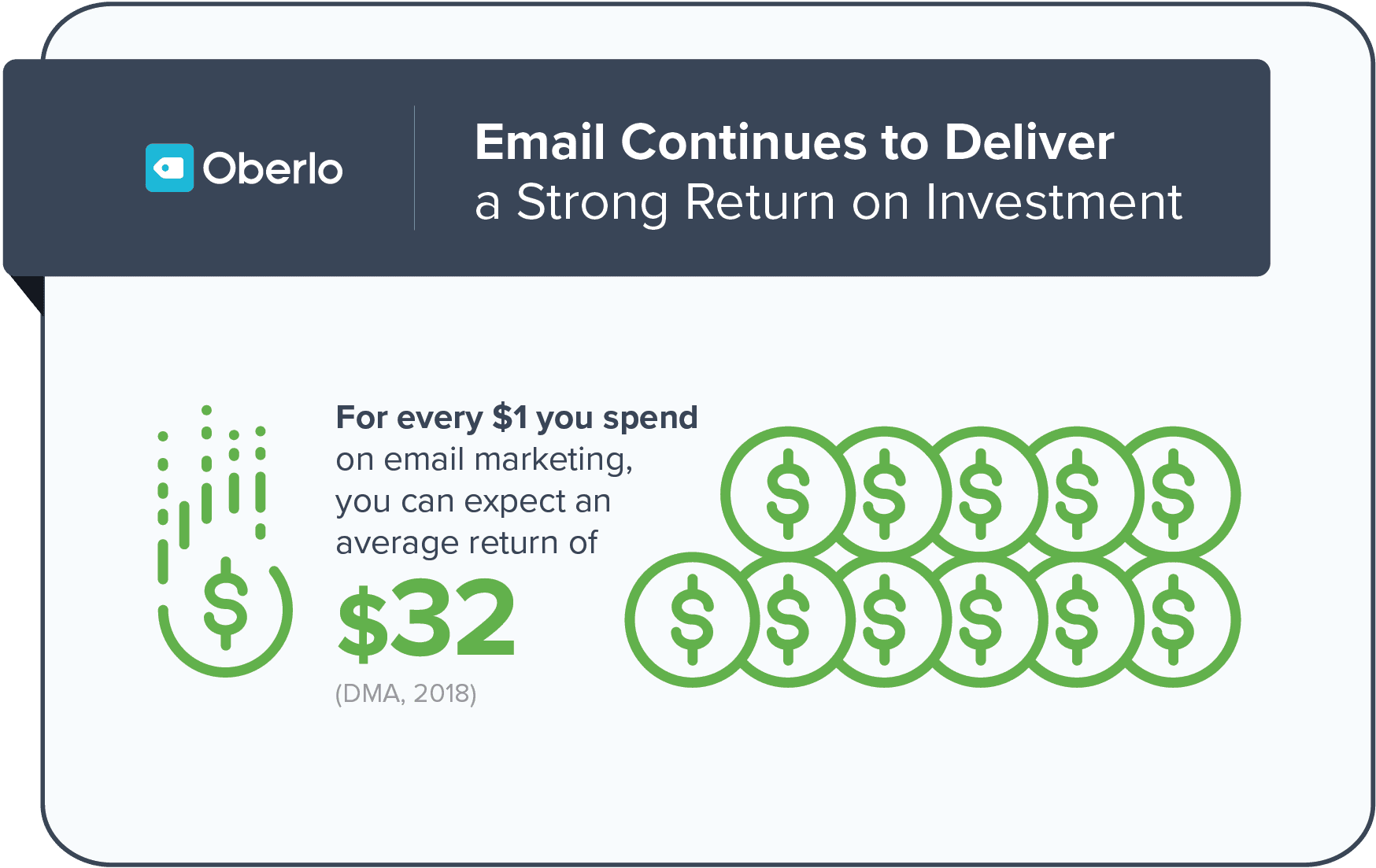
To get started with email marketing, choose an email marketing platform. A signup form on your website will help collect potential customers’ email addresses. Personalize communication with your subscribers and send valuable and relevant content quickly.
Most email marketing platforms like Sender, Constant Contact, Mailchimp, HubSpot or ActiveCampaign provide statistics on click-through and open rates and other promotional tools to improve your marketing efforts and experience.
Ensure your website is responsive even for mobile. Mobile is crucial during the auto shopper’s buying journey. In fact, 58 percent plan to use the mobile phone as the only device for vehicle research in the future.
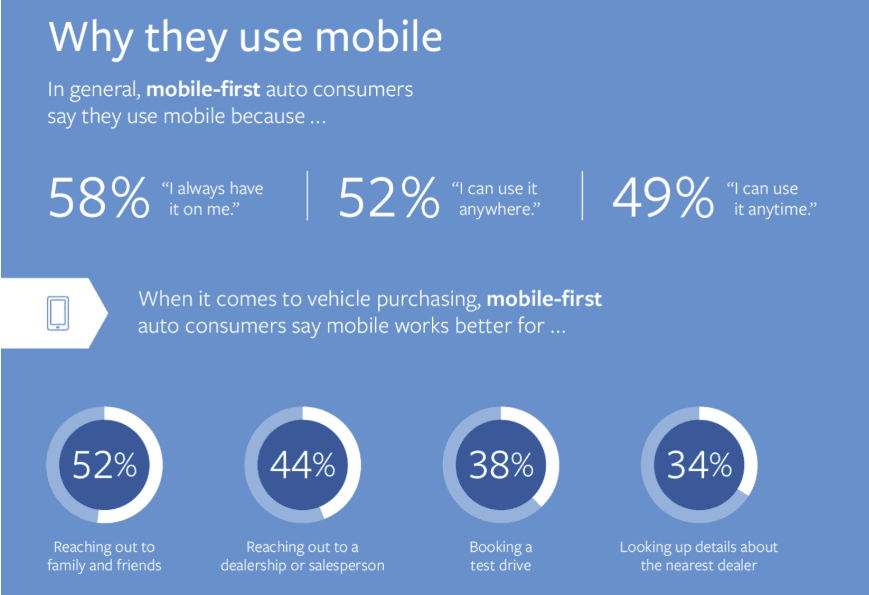
However, having a mobile-responsive website is not enough for those in the automotive industry. It would help if you took advantage of mobile apps, video content, social media, and local search opportunities to seal as many deals as possible.
Local search is extremely powerful because 43 percent of queries on Google have local intent. Almost half of the search traffic on Google is local, which can be great if your dealership dominates local searches for automotive. Seventy-eight percent of local mobile searches lead to an offline purchase in a few hours.
It’s important to be discoverable at each stage of the buying process, but especially during the final stage. This search includes directions, hours, addresses, and product availability information.
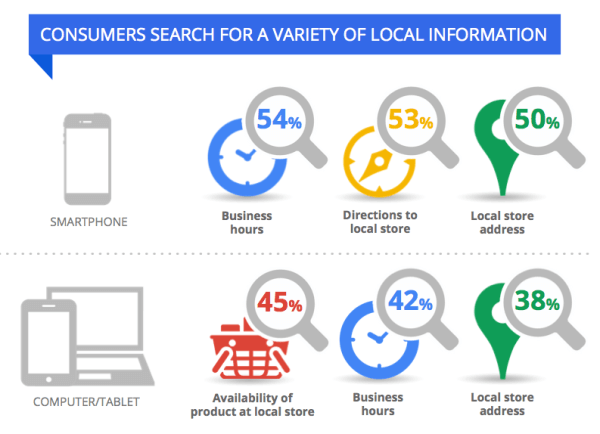
According to research, consumers also search for local information throughout the purchase process, and they purchase at a higher rate after a local search.
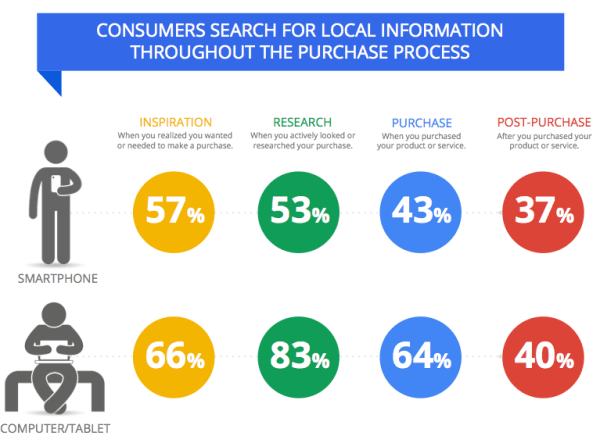
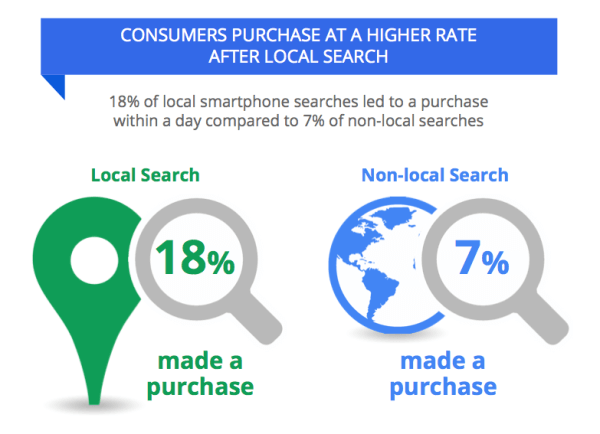
Video is the new content king. Humans are visual beings and find videos engaging and memorable. According to research, 68 percent of buyers prefer to learn about products from short videos.
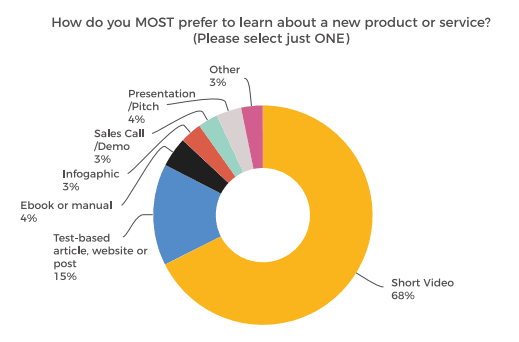
Eighty-three percent of marketers say that video offers good ROI. Videos can be in the form of:
Make sure your website provides buyers convenience.
Some of the information to include:
It’s also important to use a good CRM to monitor your website traffic. This way, you can tell where most of your traffic is coming from, your click-through rates, bounce rates, etc. You gain insights into what’s working or not and improve marketing campaigns.
Ensure your content mirrors your shopper’s goals. Customers can view images, watch videos, compare vehicle specs, book a test drive, and access warranty information regardless of the device they use. A mobile-responsive site also means that customers can easily browse and contact you while on the move.
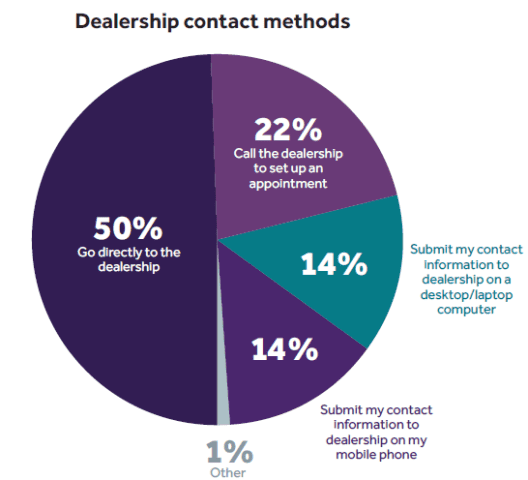
Although most shoppers will go directly to your dealership, they use their phones to check out directions and look up your number.
Your digital marketing success depends greatly on your visibility. Present your dealership as the best solution at the moment the audience is doing their search. Ensure content is available when needed and on platforms they use to seek solutions.
Fifty-six percent of new buyers start their research at 3rd party sites before visiting the dealer website. Your content should be available beyond your website.
Consider that search is evolving and that by 2020, 50 percent of searches will be voice-based.
Create informative and interactive content that drives engagement. Interactive content drives conversions. Consumers are engaged and can answer questions, explore scenarios, or make choices. It helps capture attention from the beginning.
Ensure buyers get personalized experiences. Offer test drives and tailored offers. Use personalization in emails, too.
Find ways to interact with your customers live and in the store. Shoppers can then check what’s in stock, scan products, and read reviews on their mobile phones. Retailers can also send push notifications when they have deals.
Use virtual showrooms to make the shopping experience even more enjoyable. Buyers can explore car models virtually or take them for test drives.
Unify the digital experience and increase your sales chances.
This digital marketing guide will arm you for the market. Ensure you meet your customers at their touchpoints, use multiple platforms, and incorporate different strategies to simplify the shopping experience.
As an automotive business, you’re essentially selling technology. So you can’t rely on an outdated tech stack for your own company, can you?
Did you know that you can automate most of the marketing for the automotive industry? Or that you can integrate your mission-critical solutions, like your CRM or ERP with your email automation platform?
Don’t waste time emailing every lead separately. Integrate your Salesforce and Mailchimp accounts or your NetSuite and Constant Contact accounts to put your automotive marketing on autopilot. Start here, it’s free for 28 days!